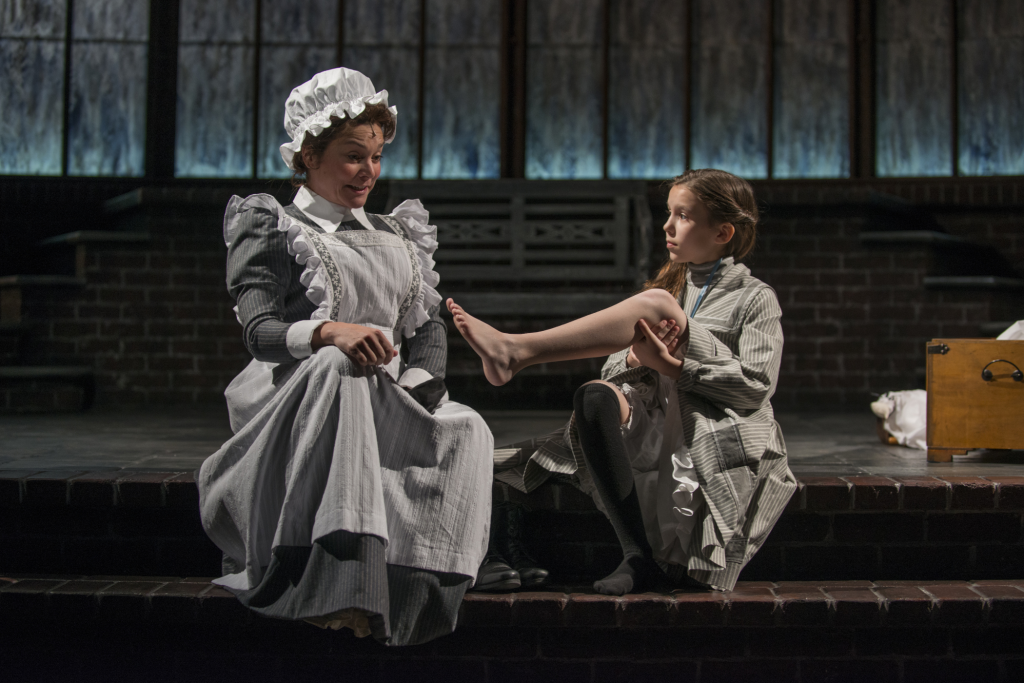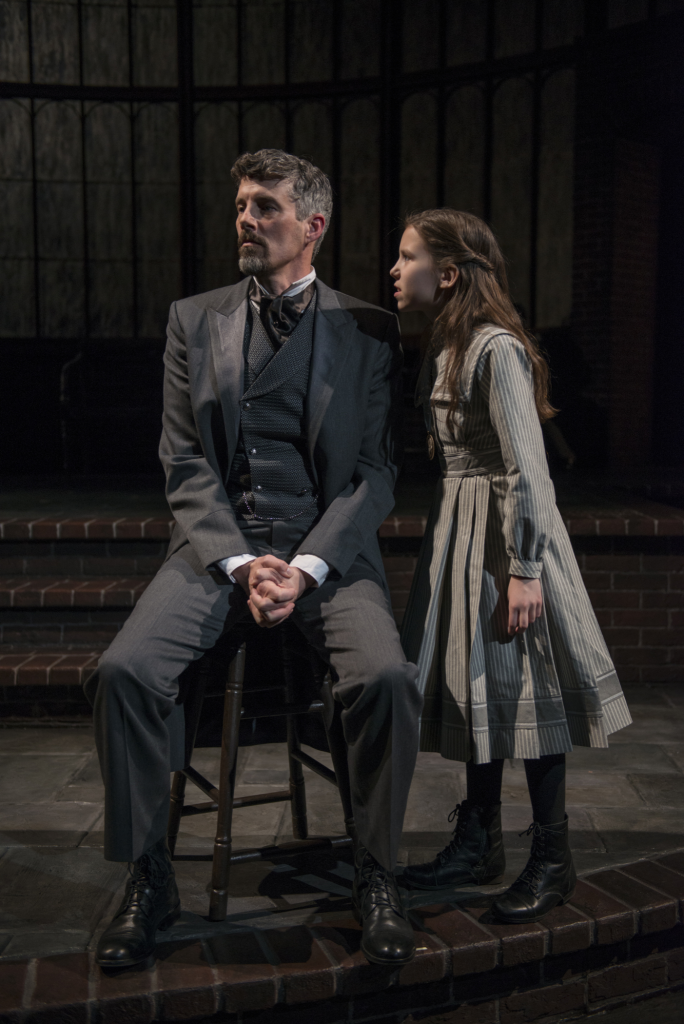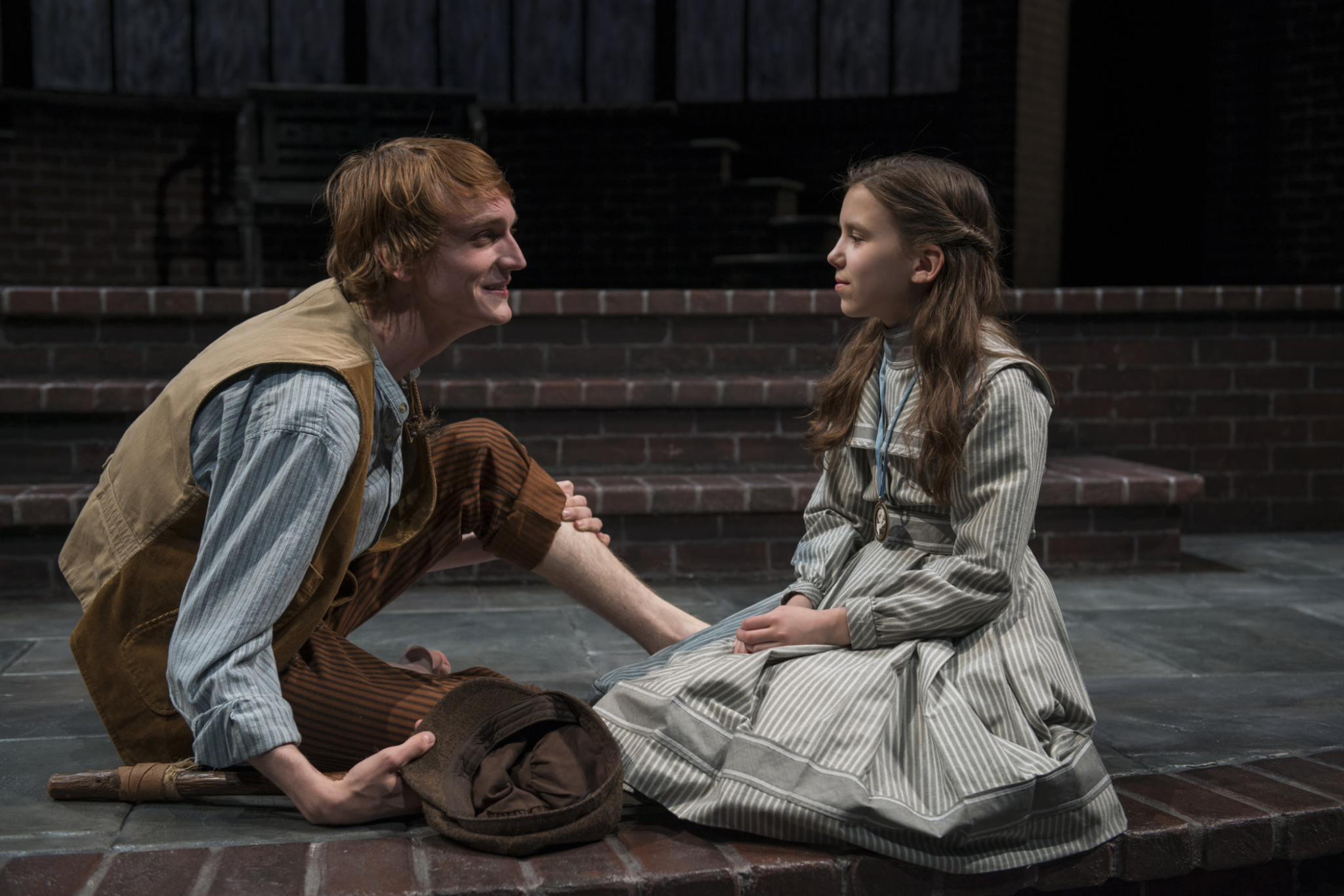Among the incoherent chatter awaiting the start of the show, one voice laughs and proclaims, “Oh, I will cry. It’s a musical about death.” Darkness descends on Court Theatre, and several dancing figures succumb to cholera behind a shroud on the stripped-down stage. They remain as shades throughout the show, joining the formidable sextet that provides the score and inviting the audience to broaden its notion of mortality, if only for an hour or two.
The story of The Secret Garden is well known to many. When the loss of her parents in colonial India’s cholera outbreak transplants her to the haunted estate of her uncle Archibald Craven, ten-year-old Mary Lennox must navigate the emotional maze that death presents. A spectral collective, including her parents, her caretaker Ayah, and Archibald’s wife Lily, haunts the house, relentlessly tormenting its inhabitants and muddling the line between living and dead. Initially reluctant to embrace the chambermaid Martha, the housekeeper Mrs. Medlock, and her elusive uncle, Mary eventually warms to the property after exploring the rambling moor that becomes her backyard. She befriends Dickon, a free-spirited guide through the wilderness of her new life, and unearths the hope necessary to continue in the life laid before her.

The challenge in staging Lucy Simon and Marsha Norman’s musical adaptation of The Secret Garden comes in acknowledging its inherent faults. Poignant and sweeping score aside, in dramatizing Frances Hodgson Burnett’s 1911 children’s novel, Simon and Norman prioritized thematic elements over storytelling and intellectualized the grieving process. The affective plot brings complex adult sorrow to the forefront; the magic of discovery still exists, but quietly, underneath the emotive discussion Norman’s libretto encourages. The stage rendition provides interiority to the novel’s secondary characters and creates a network of plots rather than a linear tale, and somewhere along the way, the charm of childhood adventure is lost. How do artistic director Charles Newell and music director Doug Peck solve this problem? Implant the enchantment elsewhere and in abundance.
Start with a cast that embraces Norman’s adaptation without releasing the attachment to youthful wonder. Tori Whaples plays Mary with calculated abandon, engaging each action effortlessly and rendering a tortured childhood relatable. Her mature acting, charismatic and delightful, wants for nothing. Rob Lindley, a Court vet whose credits include Carousel and Angels in America, contributes a harrowing performance cognizant of the widower’s fragility. His voice trembles with genuine anguish over the belief that the loss of his wife leaves his love unrequited. The eleven o’clock duet shared with Jennie Sophia’s Lily is a crippling testament to the show’s emotional power. Jeff Parker provides some of the shows playfulness as Dr. Neville Craven, Archibald’s brother. He adopts the role of pseudo-villain with careful consideration of the line between laughable and humorous and toes it well. Trent Noor does his best with Archibald’s son, the sickly Colin Craven, who is unfortunately restricted here to more of an agent of theme and never allowed to develop into a sympathetic character.

The supporting cast receives equitable stage time and deservedly so. The chorus of ghosts, particularly Alka Nayyar’s Ayah, occupies its numinous roles with attention to its duties as shades. Only when called upon do their voices harmonize in a haunting reverie that plunges the audience in to their ghostly environment. Elizabeth Ledo and Aubrey McGrath lend sincerity to Martha and Dickon, respectively, and warmly lighten each scene they participate in. Flautist Suzanne Gillen steps out of her orchestral role to embody an audacious robin, whom she portrays convincingly and with grace.
Newell embraced Norman’s departure from the source material smartly, employing each design feature in a capacity suitable for giving the show a resounding heartbeat. Six musicians, including music director Doug Peck on piano, comprise a sextet that gives life to Peck’s original orchestrations, which feature Ronnie Malley and his oud and sitar. “Anytime we’re dealing with the past I want to honor those sounds of India,” Peck said in a Q&A with dramaturg Megan E. Geigner. “Those are the ghosts she’s [Mary] carried with her to Yorkshire.” His attention to India’s distinct musical culture creates an appropriate sense of the Other in the Yorkshire that’s presented. Under Peck, the score becomes synonymous with memories alive and the presence of our dead in the everyday, a notion Norman would surely appreciate. John Culbert’s simplistic staging allows us to attend to Peck’s decisions and the emotive libretto, while Marcus Doshi’s light design casts shadows that permeate the set, further blending the living and dead. The accented eeriness Joshua Horvath provides in echoes, among other effects, immerses the theater in their supernatural world.
The Secret Garden finds its magic in the cohesion of these elements and in Newell’s trustworthy hands. Newell says the show is “based on a beloved book that at its heart suggests that the human spirit when broken can be healed, even in the midst of devastating pain and loss.” Norman’s reworking is confrontational in content and demands the audience engage death seriously and understand rebirth and redemption. Newell, however, also returns attention to The Secret Garden’s heart. What Norman left behind in terms of telling Mary’s evolution, Newell restores in directing our investment toward her journey through naïve discovery. She begins the show isolated and ignored by all, but when Mary turns the key to the garden, she invites us to believe in the unshakable resolve of living things. Her invitation is impossible to refuse.

